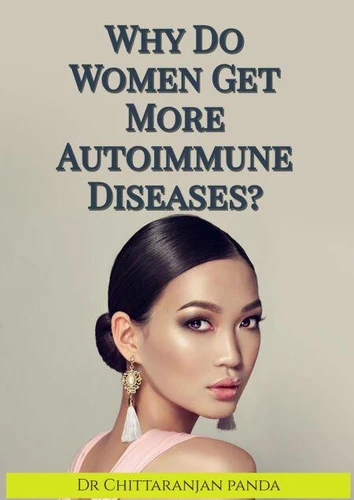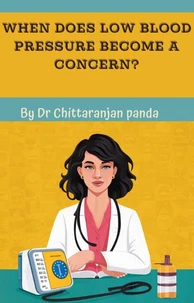Why Do Women Get More Autoimmune Diseases?. Health, #13
Par :Formats :
Disponible dans votre compte client Decitre ou Furet du Nord dès validation de votre commande. Le format ePub est :
- Compatible avec une lecture sur My Vivlio (smartphone, tablette, ordinateur)
- Compatible avec une lecture sur liseuses Vivlio
- Pour les liseuses autres que Vivlio, vous devez utiliser le logiciel Adobe Digital Edition. Non compatible avec la lecture sur les liseuses Kindle, Remarkable et Sony
 , qui est-ce ?
, qui est-ce ?Notre partenaire de plateforme de lecture numérique où vous retrouverez l'ensemble de vos ebooks gratuitement
Pour en savoir plus sur nos ebooks, consultez notre aide en ligne ici
- FormatePub
- ISBN8224946419
- EAN9798224946419
- Date de parution04/03/2024
- Protection num.pas de protection
- Infos supplémentairesepub
- ÉditeurVirtued Press
Résumé
Many people are familiar with autoimmune diseases, where the immune system mistakenly attacks healthy tissues. Interestingly, these conditions impact women significantly more than men. In fact, women are up to four times more likely to develop an autoimmune disease compared to men. While the exact reasons behind this sex bias are still being unraveled, scientists have identified several potential contributing factors:1.
The X Chromosome: Women have two X chromosomes, while men have one X and one Y. Recent research suggests that genes on the X chromosome might play a role. Since females have two X chromosomes, they have a "double dose" of these genes, potentially increasing the risk of certain autoimmune responses. However, the mechanism behind this is still being explored.2. Sex Hormones: Sex hormones like estrogen and progesterone are thought to influence the immune system.
Fluctuations in these hormones throughout a woman's life, such as during puberty, pregnancy, and menopause, might contribute to an increased risk of autoimmune diseases.3. Microchimerism: This phenomenon occurs when cells from another individual, like a fetus during pregnancy, persist in the mother's body. The immune system might perceive these foreign cells as a threat, potentially leading to an autoimmune reaction.4.
Environmental Factors: Exposure to certain environmental triggers, like viruses, pollution, and chemicals, might interact with an individual's genetic predisposition and contribute to autoimmune disease development. This factor likely affects both men and women, but women might be more susceptible due to other underlying risk factors.5. The Microbiome: The trillions of bacteria living in our gut, known as the microbiome, play a crucial role in immune function.
Differences in the gut microbiome composition between men and women might influence their susceptibility to autoimmune diseases. It's important to remember that these factors likely interact in complex ways and don't solely explain the sex bias in autoimmune diseases. More research is needed to fully understand the mechanisms at play. Taking Charge of Your Health:While the reasons behind the higher prevalence in women remain under investigation, early diagnosis and proper management are crucial for living well with an autoimmune disease.
If you experience any symptoms, consult a healthcare professional promptly for diagnosis and treatment options. Remember, advancements in research are ongoing, offering hope for improved diagnostics, treatments, and even prevention strategies in the future.
The X Chromosome: Women have two X chromosomes, while men have one X and one Y. Recent research suggests that genes on the X chromosome might play a role. Since females have two X chromosomes, they have a "double dose" of these genes, potentially increasing the risk of certain autoimmune responses. However, the mechanism behind this is still being explored.2. Sex Hormones: Sex hormones like estrogen and progesterone are thought to influence the immune system.
Fluctuations in these hormones throughout a woman's life, such as during puberty, pregnancy, and menopause, might contribute to an increased risk of autoimmune diseases.3. Microchimerism: This phenomenon occurs when cells from another individual, like a fetus during pregnancy, persist in the mother's body. The immune system might perceive these foreign cells as a threat, potentially leading to an autoimmune reaction.4.
Environmental Factors: Exposure to certain environmental triggers, like viruses, pollution, and chemicals, might interact with an individual's genetic predisposition and contribute to autoimmune disease development. This factor likely affects both men and women, but women might be more susceptible due to other underlying risk factors.5. The Microbiome: The trillions of bacteria living in our gut, known as the microbiome, play a crucial role in immune function.
Differences in the gut microbiome composition between men and women might influence their susceptibility to autoimmune diseases. It's important to remember that these factors likely interact in complex ways and don't solely explain the sex bias in autoimmune diseases. More research is needed to fully understand the mechanisms at play. Taking Charge of Your Health:While the reasons behind the higher prevalence in women remain under investigation, early diagnosis and proper management are crucial for living well with an autoimmune disease.
If you experience any symptoms, consult a healthcare professional promptly for diagnosis and treatment options. Remember, advancements in research are ongoing, offering hope for improved diagnostics, treatments, and even prevention strategies in the future.
Many people are familiar with autoimmune diseases, where the immune system mistakenly attacks healthy tissues. Interestingly, these conditions impact women significantly more than men. In fact, women are up to four times more likely to develop an autoimmune disease compared to men. While the exact reasons behind this sex bias are still being unraveled, scientists have identified several potential contributing factors:1.
The X Chromosome: Women have two X chromosomes, while men have one X and one Y. Recent research suggests that genes on the X chromosome might play a role. Since females have two X chromosomes, they have a "double dose" of these genes, potentially increasing the risk of certain autoimmune responses. However, the mechanism behind this is still being explored.2. Sex Hormones: Sex hormones like estrogen and progesterone are thought to influence the immune system.
Fluctuations in these hormones throughout a woman's life, such as during puberty, pregnancy, and menopause, might contribute to an increased risk of autoimmune diseases.3. Microchimerism: This phenomenon occurs when cells from another individual, like a fetus during pregnancy, persist in the mother's body. The immune system might perceive these foreign cells as a threat, potentially leading to an autoimmune reaction.4.
Environmental Factors: Exposure to certain environmental triggers, like viruses, pollution, and chemicals, might interact with an individual's genetic predisposition and contribute to autoimmune disease development. This factor likely affects both men and women, but women might be more susceptible due to other underlying risk factors.5. The Microbiome: The trillions of bacteria living in our gut, known as the microbiome, play a crucial role in immune function.
Differences in the gut microbiome composition between men and women might influence their susceptibility to autoimmune diseases. It's important to remember that these factors likely interact in complex ways and don't solely explain the sex bias in autoimmune diseases. More research is needed to fully understand the mechanisms at play. Taking Charge of Your Health:While the reasons behind the higher prevalence in women remain under investigation, early diagnosis and proper management are crucial for living well with an autoimmune disease.
If you experience any symptoms, consult a healthcare professional promptly for diagnosis and treatment options. Remember, advancements in research are ongoing, offering hope for improved diagnostics, treatments, and even prevention strategies in the future.
The X Chromosome: Women have two X chromosomes, while men have one X and one Y. Recent research suggests that genes on the X chromosome might play a role. Since females have two X chromosomes, they have a "double dose" of these genes, potentially increasing the risk of certain autoimmune responses. However, the mechanism behind this is still being explored.2. Sex Hormones: Sex hormones like estrogen and progesterone are thought to influence the immune system.
Fluctuations in these hormones throughout a woman's life, such as during puberty, pregnancy, and menopause, might contribute to an increased risk of autoimmune diseases.3. Microchimerism: This phenomenon occurs when cells from another individual, like a fetus during pregnancy, persist in the mother's body. The immune system might perceive these foreign cells as a threat, potentially leading to an autoimmune reaction.4.
Environmental Factors: Exposure to certain environmental triggers, like viruses, pollution, and chemicals, might interact with an individual's genetic predisposition and contribute to autoimmune disease development. This factor likely affects both men and women, but women might be more susceptible due to other underlying risk factors.5. The Microbiome: The trillions of bacteria living in our gut, known as the microbiome, play a crucial role in immune function.
Differences in the gut microbiome composition between men and women might influence their susceptibility to autoimmune diseases. It's important to remember that these factors likely interact in complex ways and don't solely explain the sex bias in autoimmune diseases. More research is needed to fully understand the mechanisms at play. Taking Charge of Your Health:While the reasons behind the higher prevalence in women remain under investigation, early diagnosis and proper management are crucial for living well with an autoimmune disease.
If you experience any symptoms, consult a healthcare professional promptly for diagnosis and treatment options. Remember, advancements in research are ongoing, offering hope for improved diagnostics, treatments, and even prevention strategies in the future.
















